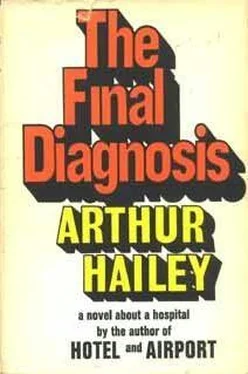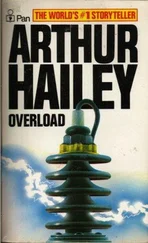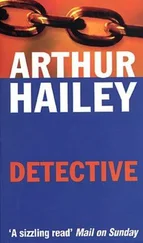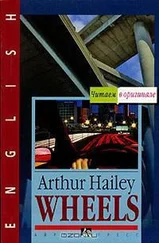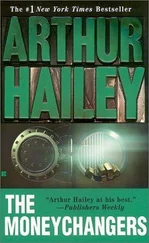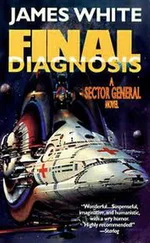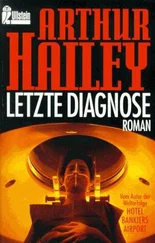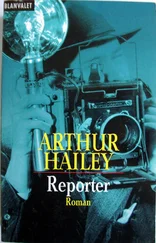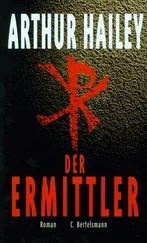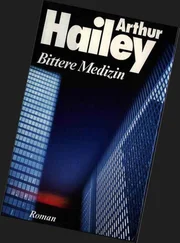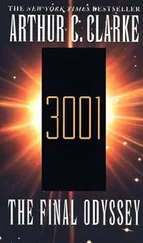Arthur Hailey - The Final Diagnosis
Здесь есть возможность читать онлайн «Arthur Hailey - The Final Diagnosis» весь текст электронной книги совершенно бесплатно (целиком полную версию без сокращений). В некоторых случаях можно слушать аудио, скачать через торрент в формате fb2 и присутствует краткое содержание. Жанр: Триллер, на английском языке. Описание произведения, (предисловие) а так же отзывы посетителей доступны на портале библиотеки ЛибКат.
- Название:The Final Diagnosis
- Автор:
- Жанр:
- Год:неизвестен
- ISBN:нет данных
- Рейтинг книги:4 / 5. Голосов: 1
-
Избранное:Добавить в избранное
- Отзывы:
-
Ваша оценка:
- 80
- 1
- 2
- 3
- 4
- 5
The Final Diagnosis: краткое содержание, описание и аннотация
Предлагаем к чтению аннотацию, описание, краткое содержание или предисловие (зависит от того, что написал сам автор книги «The Final Diagnosis»). Если вы не нашли необходимую информацию о книге — напишите в комментариях, мы постараемся отыскать её.
The Final Diagnosis — читать онлайн бесплатно полную книгу (весь текст) целиком
Ниже представлен текст книги, разбитый по страницам. Система сохранения места последней прочитанной страницы, позволяет с удобством читать онлайн бесплатно книгу «The Final Diagnosis», без необходимости каждый раз заново искать на чём Вы остановились. Поставьте закладку, и сможете в любой момент перейти на страницу, на которой закончили чтение.
Интервал:
Закладка:
Watching McNeil, his hands steady and competent, Seddons found himself wondering again what went on in the pathology resident’s mind. He had known McNeil for two years, first as a fellow resident, though senior to himself in the hospital’s pyramid system, and then more closely during his own few months in Pathology. Pathology had interested Seddons; he was glad, though, it was not his own chosen specialty. He had never had second thoughts about his personal choice of surgery and would be glad when he went back to it in a few weeks’ time. In contrast to this domain of the dead the operating room was a territory of the living. It was pulsing and alive; there was a poetry of motion, a sense of achievement he knew he could never find here. Each to his own, he thought, and pathology for the pathologists.
There was something else about pathology. You could lose your sense of reality, your awareness that medicine was of and for human beings. This brain now . . . Seddons found himself acutely aware that just a few hours ago it was the thinking center of a man. It had been coordinator of the senses—touch, smell, sight, taste. It had held thoughts, known love, fear, triumph. Yesterday, possibly even today, it could have told the eyes to cry, the mouth to drool. He had noticed the dead man was listed as a civil engineer. This, then, was a brain that had used mathematics, understood stresses, devised construction methods, perhaps had built houses, a highway, a water works, a cathedral—legacies from this brain for other humans to live with and use. But what was the brain now?—just a mass of tissue, beginning to be pickled and destined only to be sliced, examined, then incinerated.
Seddons did not believe in God and he found it hard to understand how educated people could. Knowledge, science, thought—the more these advanced, the more improbable all religions became. But he did believe in what, for lack of better phrases, he thought of as “the spark of humanity, the credo of the individual.” As a surgeon, of course, he would not always deal with individuals; nor would he always know his patients, and even when he did he would lose awareness of them in concentrating on problems of technique. But long ago he had resolved never to forget that beneath everything was a patient—an individual. In his own training Seddons had seen the cocoon of personal isolation—a safeguard against close contact with individual patients—grow around others. Sometimes it was a defensive measure, a deliberate insulation of personal emotions and personal involvement. He felt strong enough himself, though, to get along without the insulation. Moreover, to make sure it did not grow, he forced himself sometimes to think and soliloquize as he was doing now. Perhaps it would surprise some of his friends who thought of Mike Seddons only as a buoyant extrovert to know some of the thoughts that went on inside him. Perhaps it wouldn’t, though; the mind, brain—or whatever you called it—was an unpredictable machine.
What of McNeil? Did he feel anything, or was there a shell around the pathology resident too? Seddons did not know, but he suspected there was. And Pearson? He had no doubts there. Joe Pearson was cold and clinical all the way through. Despite his showmanship the years of pathology had chilled him. Seddons looked at the old man. He had removed the heart from the body and was scrutinizing it carefully. Now he turned to the student nurses.
“The medical history of this man shows that three years ago he suffered a first coronary attack and then a second attack earlier this week. So first we’ll examine the coronary arteries.” As the nurses watched intently Pearson delicately opened the heart-muscle arteries.
“Somewhere here we should discover the area of thrombosis . . . yes, there it is.” He pointed with the tip of a metal probe. In the main branch of the left coronary artery, an inch beyond its origin, he had exposed a pale, half-inch clot. He held it out for the girls to see.
“Now we’ll examine the heart itself.” Pearson laid the organ on a dissecting board and sliced down the center with a knife. He turned the two sections side by side, peered at them, then beckoned the nurses closer. Hesitantly they moved in.
“Do you notice this area of scarring in the muscle?” Pearson indicated some streaks of white fibrous tissue in the heart, and the nurses craned over the gaping red body cavity to see more closely. “There’s the evidence of the coronary attack three years ago—an old infarct which has healed.”
Pearson paused, then went on. “We have the signs of the latest attack here in the left ventricle. Notice the central area of pallor surrounded by a zone of hemorrhage.” He pointed to a small dark-red stain with a light center, contrasting with the red-brown texture of the rest of the heart muscle.
Pearson turned to the surgical resident. “Would you agree with me, Dr. Seddons, that the diagnosis of death by coronary thrombosis seems fairly well established?”
“Yes, I would,” Seddons answered politely. No doubt about it, he thought. A tiny blood clot, not much thicker than a piece of spaghetti; that was all it took to cut you off for good. He watched the older pathologist put the heart aside.
Vivian was steadier now. She believed she had herself in hand. Near the beginning, and when the saw had cut into the dead man’s skull, she had felt the blood drain from her head, her senses swim. She knew then she had been close to fainting and had determined not to. For no reason she had suddenly remembered an incident in her childhood. On a holiday, deep in the Oregon forest, her father had fallen on an open hunting knife and cut his leg badly. Surprisingly in so strong a man, he had quailed at the sight of so much of his own blood, and her mother, usually more at home in the drawing room than the woods, had become suddenly strong. She had fashioned a tourniquet, stemmed the blood, and sent Vivian running for help. Then, with Vivian’s father being carried through the woods on an improvised litter of branches, every half-hour she had released the tourniquet to keep circulation going, then tightened it to halt the bleeding again. Afterward the doctors had said she had saved the leg from amputation. Vivian had long since forgotten the incident, but remembering it now had given her strength. After that she knew there would not be any problem about watching an autopsy again.
“Any questions?” It was Dr. Pearson asking.
Vivian had one. “The organs—those that you take out of the body. What happens to them, please?”
“We shall keep them, probably for a week. That is—the heart, lungs, stomach, kidneys, liver, pancreas, spleen, and brain. Then we shall make a gross examination which will be recorded in detail. At that time also we’ll be studying organs removed at other autopsies—probably six to a dozen cases all together.”
It sounded so cold and impersonal, Vivian thought. But maybe you had to get that way if you did this all the time. Involuntarily she shuddered. Mike Seddons caught her eye and smiled slightly. She wondered if he was amused or being sympathetic. She could not be sure. Now one of the other girls, was putting a question. She sounded uneasy, almost afraid to ask. “The body—is it buried then . . . just by itself?”
This was an old one. Pearson answered it. “It varies. Teaching centers such as this usually do more study after autopsies than is done in non-teaching hospitals. In this hospital just the shell of the body goes on to the undertakers.” He added as an afterthought: “They wouldn’t thank us for putting the organs back anyway. Just be a nuisance when they’re embalming.”
That was true, McNeil reflected. Maybe not the gentlest way of putting it, but true all the same. He had sometimes wondered himself if mourners and others who visited funeral parlors knew how little remained in a body that had been autopsied. After an autopsy like this one, and depending on how busy a pathology department was, it might be weeks before the body organs were disposed of finally, and even then small specimens from each were kept stored indefinitely.
Читать дальшеИнтервал:
Закладка:
Похожие книги на «The Final Diagnosis»
Представляем Вашему вниманию похожие книги на «The Final Diagnosis» списком для выбора. Мы отобрали схожую по названию и смыслу литературу в надежде предоставить читателям больше вариантов отыскать новые, интересные, ещё непрочитанные произведения.
Обсуждение, отзывы о книге «The Final Diagnosis» и просто собственные мнения читателей. Оставьте ваши комментарии, напишите, что Вы думаете о произведении, его смысле или главных героях. Укажите что конкретно понравилось, а что нет, и почему Вы так считаете.
